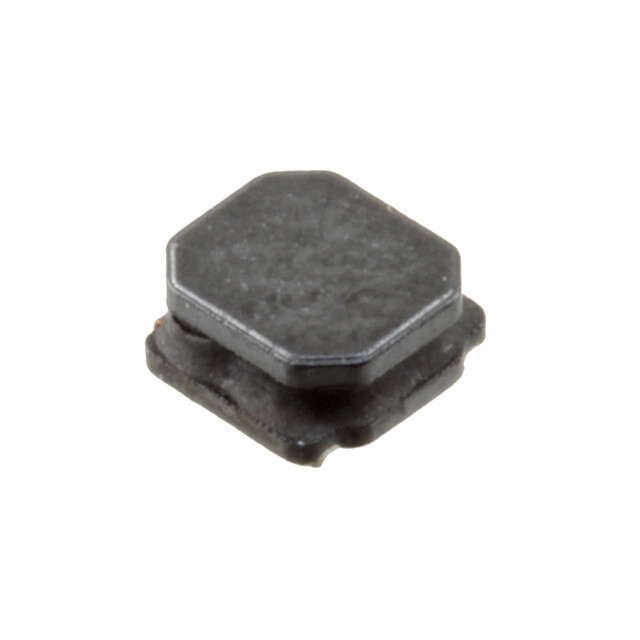This Product Selection Guide contains information to help select products in the Fixed Inductors category on DigiKey.com
An inductor, also known as a coil, choke, or reactor, is a passive two-terminal electrical component that stores energy in a magnetic field when electric current flows through it. When the current changes, the magnetic field induces a voltage in the conductor. The induced voltage has a polarity which opposes the change in current that created it. The unit of inductance is the Henry (H). Mounting options include surface, through-hole, and chassis.
SelectionCharacteristics
Type: Indicates how the device is constructed.
Material - Core: The material from which the device’s magnetic core is formed.
Inductance: Inductance indicates a device’s opposition to changes in the electrical current flowing through it. Measured in Henrys.
Tolerance: Characterizes the extent of permitted variability of overall device inductance among samples of a given part number, resulting from variations in manufacturing.
Current Rating (Amps): Typically this represents the maximum current to which a device will meet its given specifications. Exceeding this current may damage the device and/or other system components.
Current - Saturation (Isat): Characterizes device limitations imposed by magnetic constraints; the amount of DC bias current that results in inductance being reduced by some specified amount (often 20-30%) from its zero-bias value.
Shielding: Whether or not the device possesses an electrically insulating barrier that helps to reduce or eliminate electromagnetic interference, and its type if applicable.
DC Resistance (DCR): Characterizes the maximum resistance of a current path through a device.
Q @ Freq: Characterizes the ratio of a device’s inductive reactance to its series resistance at the specified test frequency.
Frequency - Self Resonant: The frequency above which the effect of an inductor’s parasitic capacitances become dominant, and the device behaves in a capacitive manner.
Ratings: Minimum performance standards of the device, which are typically set by a third party.
Operating Temperature: Recommended operating temperature, typically given in a range or as a maximum. Exceeding these temperatures may affect performance or damage the device and other system components.
Inductance Frequency - Test: The test signal frequency used to characterize a device and measure other device parameters.
Features: These are different capabilities or properties of the device such as high current or low loss.
Mounting Type: Indicates how the device is attached.
Package/Case: Indicates the type of protective case used on an electronic component to allow easy handling, installation, and protection. This selection was determined to be the closest industry standard applicable to the supplier’s device packaging. Typically it is best to check the actual dimensions from the datasheet rather than depend on this terminology when designing your circuit.
Supplier Device Package: This is what the manufacturer calls the package of this device. They are manufacturer specific. It is typically best to use the actual dimensions from the datasheets rather than to go by this terminology when designing your circuit.
Size/Dimension: The physical dimensions of the device. Typically length X width.
Height - Seated (Max): Indicates how far the device will extend above the surface to which it has been attached.
ProductExamples
| MFR PART # | 7443642200 |
|---|---|
| DIGIKEY PART # | 732-5628-ND |
| MANUFACTURER | Würth Elektronik |
| DESCRIPTION | FIXED IND 22UH 30A 2.4 MOHM SMD |
| DATASHEET | Click Here |
| MFR PART # | 768772102 |
|---|---|
| DIGIKEY PART # | 732-3261-ND |
| MANUFACTURER | Würth Elektronik |
| DESCRIPTION | FIXED IND 1MH 500MA 2.08 OHM TH |
| DATASHEET | Click Here |
| MFR PART # | 74404043221A |
|---|---|
| DIGIKEY PART # | 732-10763-2-ND - Tape & Reel (TR) |
| MANUFACTURER | Würth Elektronik |
| DESCRIPTION | FIXED IND 220UH 310MA 2.43OHM SM |
| DATASHEET | Click Here |
SchematicSymbol

Schematic symbol courtesy of Scheme-it. Please see their website for more information and symbols.
MediaLinks
Videos
What is an Inductor
TDK FAQs - Inductor Q Value
Why It Matters: Inductor Construction Types
WEbinar Powered by DigiKey: Inductors
Articles
Design Trade-offs in Integrating an Inductor
The Advantages (and Drawbacks) of DC-to-DC Voltage Converters with Integrated Inductors
Product Training Modules
Inductors
Blogs
Inductor Basics
Using Inductor Core Material and Shape
There Are No Ideal Inductors
TechForum
Measuring Accurate Inductance of an SMD Inductor or Coil
Inductor Behavior : Why Orientation Does Not Matter
Inductors - Current Rating Vs Saturation Current



